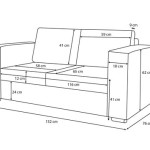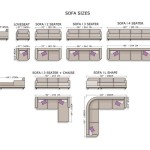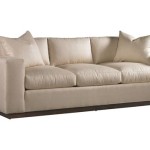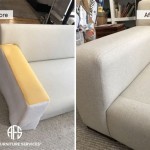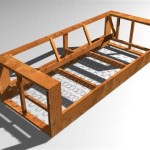Patio Sectional Sofa Plans: A Comprehensive Guide to Building Your Outdoor Oasis
Patio sectional sofas represent a popular choice for outdoor seating arrangements, offering both comfort and versatility. For individuals seeking a customized and potentially cost-effective solution, exploring patio sectional sofa plans presents a worthwhile endeavor. This article provides a comprehensive guide to understanding the process of acquiring, interpreting, and implementing patio sectional sofa plans, enabling informed decision-making regarding a do-it-yourself outdoor furniture project.
The appeal of a patio sectional sofa lies in its modularity. Individual sections can be arranged in various configurations to accommodate different spatial requirements and social settings. This adaptability makes them ideal for smaller patios, expansive decks, or even poolside lounging areas. Pre-fabricated sectional sofas, while convenient, often come with a premium price tag and limited customization options. Plans, on the other hand, empower individuals to tailor the dimensions, materials, and overall aesthetic to their specific needs and preferences.
Before embarking on a building project, it is crucial to understand the different types of plans available and the factors influencing their selection. The complexity of the chosen plan directly impacts the skill level, time commitment, and required tools and materials. A well-considered plan serves as a detailed roadmap, minimizing errors and ensuring a structurally sound and visually appealing final product.
Understanding Different Types of Patio Sectional Sofa Plans
Patio sectional sofa plans are not monolithic; they exist in various forms, each catering to different levels of expertise and design preferences. Recognizing these variations allows for a more informed selection process, aligning the plan with individual skillsets and project goals.
One primary distinction lies in the level of detail provided. Some plans offer basic dimensions and material lists, assuming a certain level of prior woodworking knowledge. These are often suitable for experienced builders who are comfortable improvising and adapting the design as needed. Conversely, other plans furnish highly detailed instructions, including step-by-step diagrams, precise measurements, and comprehensive joinery techniques. Such plans are particularly beneficial for novice builders or those seeking a more structured approach.
Another key difference lies in the material specified. Plans may call for traditional lumber, such as cedar, redwood, or pressure-treated pine. These materials offer varying degrees of durability, weather resistance, and aesthetic appeal. Other plans may incorporate alternative materials, such as recycled plastic lumber or metal framing, each with its own set of advantages and disadvantages. The choice of material significantly impacts the final cost, weight, and longevity of the sectional sofa.
Furthermore, plans can vary in their design complexity. Some feature simple, clean lines and basic joinery, while others incorporate intricate details, curved elements, or advanced construction techniques. The design should be chosen based on individual skill level, desired aesthetic, and available tools. Attempting a complex design without the necessary expertise or equipment can lead to frustration and potentially compromise the structural integrity of the sofa.
Finally, it is essential to consider the source of the plan. Numerous online resources offer free or paid plans. Free plans may appear attractive due to their accessibility, but they often lack the detail and accuracy found in commercially available plans. Paid plans, typically developed by experienced designers or woodworkers, often include more comprehensive instructions, technical support, and material lists, making them a worthwhile investment for ensuring a successful project.
Key Considerations When Selecting Patio Sectional Sofa Plans
Once the different types of plans are understood, the next step involves evaluating specific plans based on several crucial factors. These considerations ensure that the chosen plan aligns with individual requirements, capabilities, and available resources.
First and foremost, assess the skill level required. Carefully examine the plan's instructions and diagrams to determine the degree of woodworking knowledge and experience needed. If the plan incorporates techniques that are unfamiliar or intimidating, it may be prudent to choose a simpler design or acquire the necessary skills before proceeding. Undertaking a project that exceeds one's capabilities can lead to errors, wasted materials, and ultimately, a disappointing outcome.
Secondly, evaluate the material cost and availability. The plan should include a detailed material list, specifying the type, quantity, and dimensions of all required components. Research the cost of these materials at local lumberyards or hardware stores to estimate the overall project expense. Also, confirm the availability of the specified materials, as some exotic hardwoods or specialized hardware may be difficult to source. Consider alternative materials if necessary, ensuring that they possess comparable durability and weather resistance.
Thirdly, consider the tools required. Most patio sectional sofa plans necessitate a basic set of woodworking tools, including a saw (circular saw, miter saw, or hand saw), drill, screwdriver, measuring tape, level, and sandpaper. More complex designs may require specialized tools, such as a router, jointer, or planer. Evaluate the existing tool collection and determine whether any additional tools need to be purchased or rented. Factor the cost of these tools into the overall project budget.
Fourthly, evaluate the available workspace. Building a patio sectional sofa requires a dedicated workspace that is large enough to accommodate the individual components and the assembled sections. Ensure adequate ventilation and lighting to facilitate safe and accurate work. If workspace is limited, consider modifying the plan to build the sofa in smaller, more manageable sections.
Beyond these technical considerations, aesthetic preferences also play a significant role. Choose a plan that complements the existing outdoor decor and reflects personal style. Consider the overall dimensions of the sofa and how it will fit within the designated patio space. Visualize the finished product in its intended location to ensure that it meets aesthetic expectations.
Implementing Patio Sectional Sofa Plans: A Step-by-Step Approach
With a well-chosen plan in hand, the implementation phase begins. A structured and methodical approach is essential for ensuring accuracy, efficiency, and ultimately, a successful outcome. The following steps provide a framework for navigating the building process.
The first step involves thoroughly reviewing the plans. Carefully read all instructions, diagrams, and notes to gain a comprehensive understanding of the project. Pay particular attention to critical dimensions, joinery techniques, and material specifications. Clarify any ambiguities or uncertainties before proceeding. This initial review minimizes the risk of errors and wasted effort.
The second step involves preparing the materials. Accurately measure and cut all lumber to the dimensions specified in the plan. Use sharp tools and precise measuring techniques to ensure consistent and accurate cuts. Label each piece to facilitate assembly. At this stage, apply any necessary protective treatments, such as sealant or stain, to the lumber. Allowing the wood to dry thoroughly after treatment prevents warping and ensures optimal adhesion of subsequent finishes.
The third step involves assembling the sectional sofa sections. Follow the plan's instructions carefully, paying close attention to joinery techniques. Use appropriate fasteners, such as screws, bolts, or wood glue, to ensure strong and durable connections. Ensure that all corners are square and all surfaces are level. Periodically check the progress against the plan's dimensions to identify and correct any discrepancies.
The fourth step involves finishing the sectional sofa. Sand all surfaces smooth to remove any rough edges or imperfections. Apply a protective finish, such as paint, stain, or varnish, to enhance the appearance and protect the wood from the elements. Choose a finish that is specifically designed for outdoor use and that complements the overall aesthetic. Allow the finish to dry completely before proceeding to the final step.
The final step involves adding cushions and upholstery. Select cushions that are appropriately sized and shaped for the sectional sofa sections. Choose fabrics that are durable, water-resistant, and fade-resistant. Consider the color and pattern of the fabric to complement the overall design. Secure the cushions to the sofa sections using appropriate fasteners, such as Velcro or ties. Once the cushions are in place, arrange the sections in the desired configuration and enjoy the newly crafted patio sectional sofa.
One Arm 2x4 Outdoor Sofa Sectional Piece Ana White

Build An Outdoor Sectional For Under 100 Gray House Studio

Diy Modern Outdoor Sofa Plans 731 Woodworks

25 Diy Outdoor Sectional Plans Free Patio Sofa Couch Furniture

Diy Outdoor Sectional Couch Kinda Sorta Simple

Diy Outdoor Sectional Couch Kinda Sorta Simple

Armless 2x4 Outdoor Sofa Sectional Piece Ana White

Diy Modular Outdoor Seating Shanty 2 Chic

Diy Plans For A Modern Outdoor Sectional Real Cedar

Diy Outdoor Sectional Sofa Part 1 How To Build The Addicted 2

